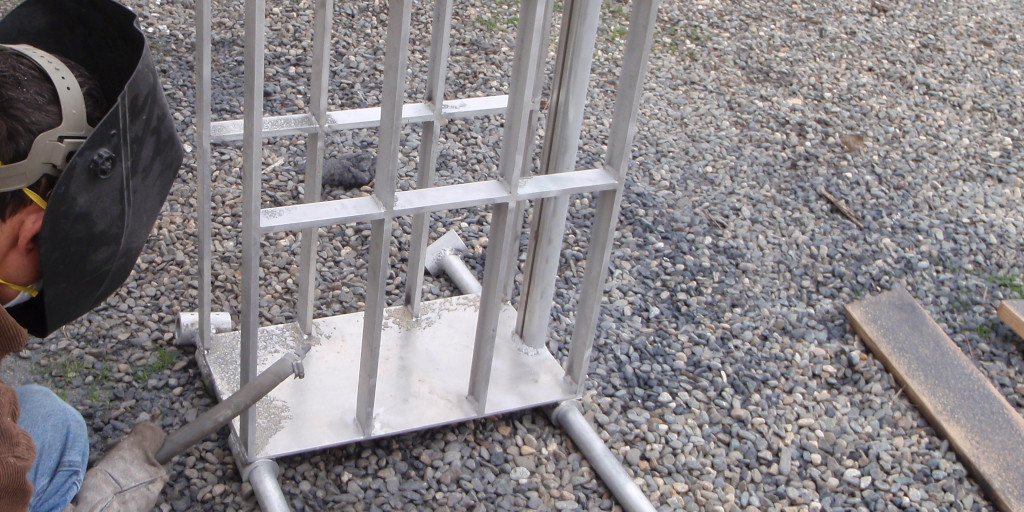Abrasive Blasting Dust Information
Abrasive blasting makes use of many materials. In fact, your choice of abrasive is affected by what you are working on and trying to remove. Abrasive blasting dust is one of the many reasons professionals look into industrial dust collection solutions. So in this article, we will consider why it is important to consider controlling abrasive blasting dust.
What is Abrasive Blasting?
For the most part, if you are visiting this site, we understand that you probably already know the answer to that question. However, for the sake of clarification we will cover basics of abrasive blasting here.
Wikipedia gives the following definition of abrasive blasting on its website:
the operation of forcibly propelling a stream of abrasive material against a surface under high pressure to smooth a rough surface, roughen a smooth surface, shape a surface or remove surface contaminants.
As you can see from that description of the technique, it makes use of a “blast media”. So, a media is streamed with force at the surface to be treated. As a result, the coating is removed by the stream of blast material. Hence, professionals use abrasive blasting for many purposes. Additionally, some of the abrasive materials used in abrasive blasting as “blast media” include:
- Sand
- Glass Beads
- Crushed Glass
- Steel Shot
- Aluminum Oxide
- Silicon Carbide
- Plastic
- Steel Grit
- Corn Cob
- Walnut Shell
Various abrasives are used because each material used has its own measure of abrasiveness. Thus, the blaster usually chooses the abrasive based on what material is being treated and what substance is the target for removal. Additionally, the blasting media being used has an impact on the risks involved. So let’s consdier some of them.
Is Abrasive Blasting Dangerous?
Abrasive blasting removes various substances from surfaces, but there are some dangers. OSHA publishes standards regarding safety. Then, professionals implement them to reduce the dangers associated with abrasive blasting. The OSHA® FactSheet entitled: Protecting Workers from the Hazards of Abrasive Blast Materials covers protections needed for abrasive blasting.
Furthermore, health hazards associated with abrasive blasting include:
- Silicosis
- Lung Cancer
- Breathing Problems
- Lung Damage
Each abrasive blasting operation is unique in a variety of aspects. Additionally, the variables affecting the danger level include:
- Coatings
- Surfaces
- Blasting Media
- Evironmental Conditions
Since each operation can vary, it is important to know about the risks inherent to the industry in which the blasting is being done.
Exposure to Respirable Abrasive Material
As mentioned above, exposure to respirable dust particles from the coating being removed, the blasting media, or both in combination has been associated with several health risks. Therefore, it is imperative that exposure be minimized through practices, protocols, and personal protective equipment.
The OSHA document mentioned above specifies “Engineering Controls” that contribute to a safer work environment. Such controls reduce exposure to the dust generated by abrasive blasting. Furthermore, one of the controls mentioned there is ventilation. Dust collection systems and dust collection booths contribute in this area.
Health Effects of Abrasive Material Dust
Some wonder if the dangers of exposure to abrasive blasting dust are really that significant. Yet, as we have already covered, depending on the blasting media, the risks can vary. For example, sandblasting can contribute to silicosis. You can see why this is a hazard by learning how silicosis can affect you.
Silicosis is just one potential health issue. Each blasting medium carries with it very diverse hazards. The idea here is to control the amount of respirable particulates that can cause these issues. Dust collection is one facet of the control.
OSHA Guidelines for Reducing Exposure to Abrasive Materials
We have already alluded to the fact that OSHA has guidelines and standards for handling abrasive blasting hazards. Protection measures include Respiratory Protection and Hearing Protection. These protections are implemented in various ways through multiple practices depending on the specific abrasive materials being used, the coatings being removed, and the surface being blasted. To find out more, you can check out the FactSheet here.
As we have seen, abrasive blasting brings with it a number of potential hazards. Yet, there are steps that can be taken to protect workers from exposure to several issues. Knowing about the risks and the steps you can take to reduce blasting dust in the work environment are good to be aware of in your shop.
Dust Collection Booths

